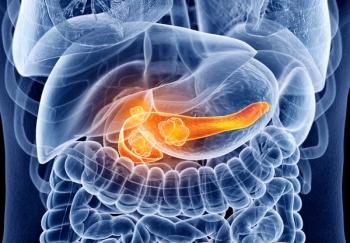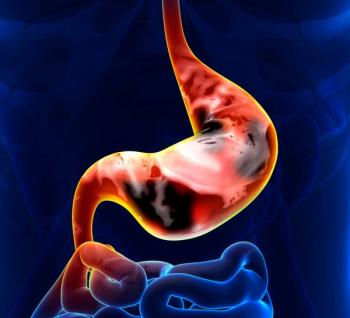
Guideline-Driven Treatment Improved Survival for Stage II/III Colon Cancer
Adherence to treatment guidelines for stage II or III colon cancer improved from 2001 to 2011 and resulted in improved survival outcomes.
Adherence to treatment guidelines for stage II or III colon cancer improved from 2001 to 2011 among patients in Texas, and adherence to these guidelines resulted in improved survival outcomes, according to the results of a study
Current National Comprehensive Cancer Network (NCCN) guidelines for patients with stage I to III colon cancer include undergoing colectomy with lymphadenectomy of at least 12 nearby lymph nodes. Additional treatment with adjuvant chemotherapy is recommended for patients with stage III disease.
“Patients who received stage-specific, guideline-recommended therapy were found to have better 5-year cancer-specific survival compared with patients whose treatment differed from that of the guidelines,” wrote Hui Zhao, PhD, of the University of Texas MD Anderson Cancer Center in Houston, and colleagues.
Zhao and colleagues linked data from the Texas Cancer Registry with Medicare data to evaluate if use of guideline-directed treatment among older patients with colon cancer was associated with improved outcomes. The study included data from 6,029 patients with stage II (n = 2,161) or III (n = 3,868) disease aged 66 years or older diagnosed between 2001 and 2011.
About 64% of the patients adhered to surgical guidelines and underwent recommended surgery for their disease. The rate of surgical adherence increased from 47.2% in 2001 to 84% in 2011. Surgical adherence was more likely among patients who were married, those with stage III disease, those with larger tumor size, and those whose surgery was performed by a colorectal specialist surgeon.
Among the patients with stage III disease age 80 years or younger, about half (50.3%) underwent adjuvant chemotherapy. The rate of patients undergoing adjuvant chemotherapy increased from 48.9% in 2001 to 56.2% in 2005, but then decreased again to 53.1% in 2011. Patients who did not undergo adjuvant chemotherapy were more likely to be older than 75 years old, be male, and have a Charlson Comorbidity Index greater than 1.
In addition, those who had Medicare insurance covered by a state buy-in program were 18% less likely to receive adjuvant chemotherapy compared with those not enrolled in a state buy-in program.
“This disparity in chemotherapy receipt for low-income patients may be due to buy-in enrollees not being as physically or mentally fit as patients in non–buy-in programs to receive chemotherapy,” the researchers wrote. “It also may be due to a lack of oncologists that accept Medicare state buy-in patients because reimbursement for patients’ cost sharing by the state buy-in program are low compared with that of non–buy-in patients.”
Overall, 51% of patients with stage II disease and 30% of patients with stage III disease received stage-specific, guideline-recommended treatment.
A 5-year survival rate of 87% was seen in patients with stage II disease who adhered to surgical guidelines compared with a rate of 77% for nonadherent surgery and 84% for nonadherent surgery plus chemotherapy. The 5-year survival rate was 73% for patients with stage III disease who adhered to surgical guidelines.
When the researchers adjusted for demographic and tumor characteristics, they found that improved cancer cause-specific survival was associated with the receipt of stage-specific, guideline-concordant treatment for patients with stage II or III disease.
Newsletter
Stay up to date on recent advances in the multidisciplinary approach to cancer.

















































































